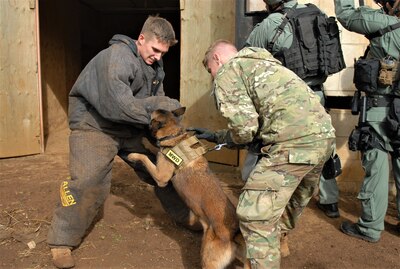By Lisa Ferdinando DoD News, Defense Media Activity
WASHINGTON, Feb. 13, 2018 — The recently released Nuclear
Posture Review is grounded in a “realistic assessment” of the current security
environment, and tailored to deter threats and reassure allies, Deputy
Undersecretary of Defense for Policy David J. Trachtenberg said here yesterday.
In a discussion at the Brookings Institution, Trachtenberg
outlined the four key goals of the review, which was released Feb. 2: deterring
nuclear and nonnuclear attack, assuring allies and partners, achieving U.S.
objectives should deterrence fail, and hedging against an uncertain future.
“The 2018 NPR addresses the reality that while the Cold War
has been over for decades, a much more challenging nuclear threat environment
has developed since the previous 2010 nuclear posture review,” he explained.
The goal of recommendations contained in the 2018 NPR is to
“deter war, not to fight one,” Trachtenberg said.
The Defense Department conducted the review along with the
departments of State and Energy, in consultation with allies and experts from
inside and outside the government, he explained.
The NPR emphasizes that U.S. nuclear policy will continue to
contribute to U.S. nuclear nonproliferation goals, he said, adding that those
roles are consistent with past priorities of U.S. nuclear policy.
Recognizes Need for Nuclear Triad
“The new NPR recognizes the need for the nuclear triad,” he
said, explaining it sustains the previous administration's plan for modernizing
the aging U.S. nuclear triad of land-based, sea-based, and air delivery
platforms, as well as its supporting nuclear infrastructure and command and
control.
Trachtenberg pointed out the 2018 NPR, consistent with the
previous NPR, declares that the United States would only consider using nuclear
weapons in “extreme circumstances to defend U.S. vital interests.”
He noted that the 2018 NPR recommends two nuclear programs
to strengthen U.S. capabilities to deter attacks and assure allies: the
modification of a small number of existing submarine-launched ballistic
missiles to include a low yield option, and the pursuit of a nuclear
sea-launched cruise missile.
“We must recognize that effective deterrence is about
tailoring our capabilities to a potential adversary’s calculations regarding
the use of nuclear force to ensure that it can never appear to be a useful
option,” he said.
The 2018 NPR, he said, is “grounded in a realistic
assessment of the contemporary security environment – one that recognizes a
return of great power competition and the increasing salience of nuclear
weapons in the arsenals and doctrines of potential adversaries.”








